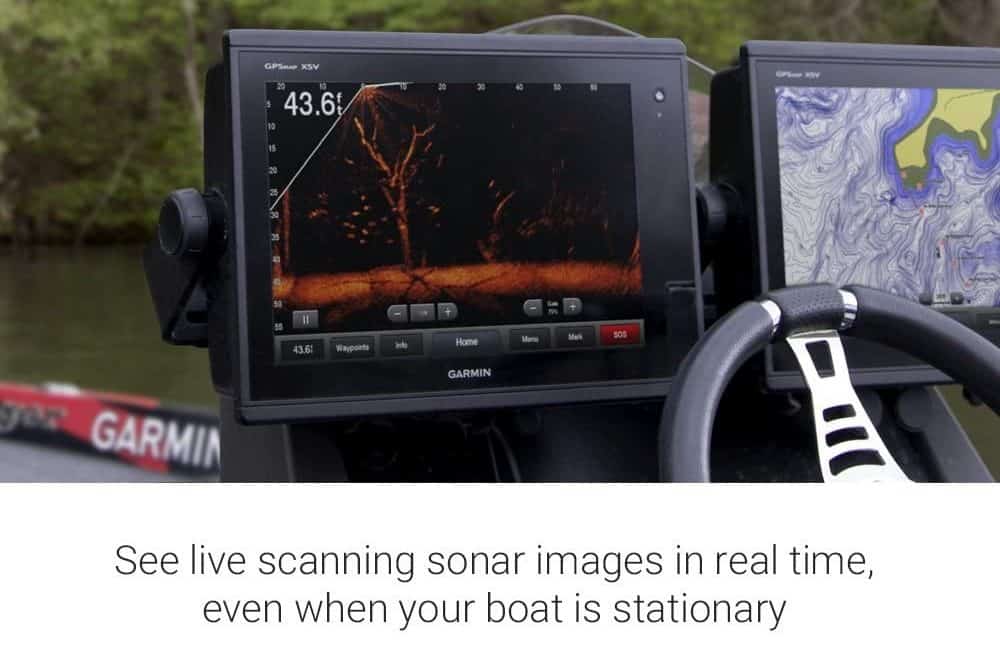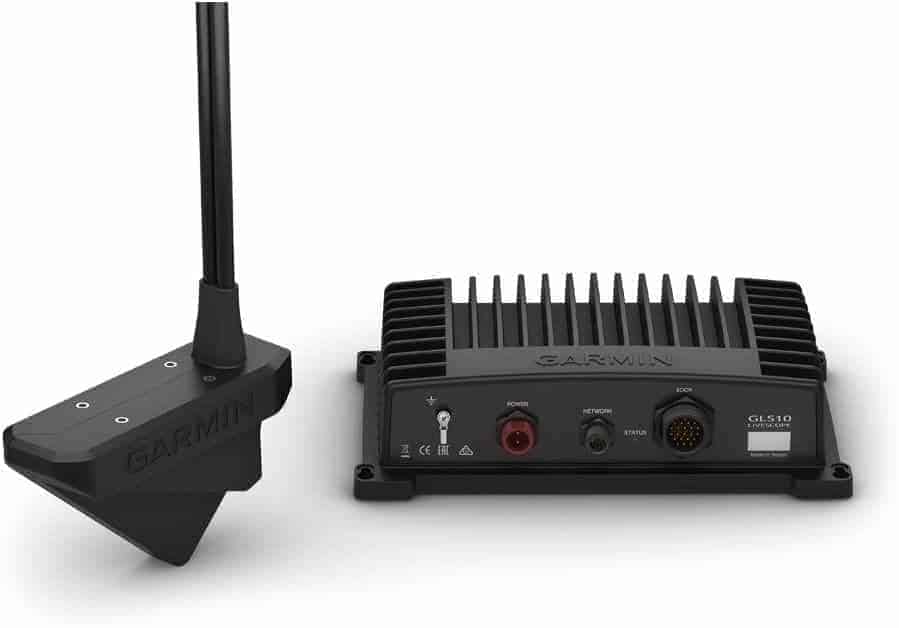Garmin Livescope Review
When it comes to GPS and fishing technology, very few companies can compare to Garmin International. Not only do they offer excellent fish finding gear and have done so for decades now, but they also give you tech that is easy and fun to use. One of the most outstanding pieces of fishing equipment in their arsenal is the Garmin Livescope.
Let’s take a quick look at what it is, how to use it, and why you might want to consider ordering it for your next fishing trip.
Garmin Livescope Review
If you keep up with the latest news on marine electronics, then you have probably come across Garmin Livescope at some point. Even if you’ve never used it or seen it in action, you probably know that it won the 2018 ICAST “Best of Show” award. While that might be a wonderful feather in its cap, it isn’t the only reason this transducer is on my list of “must-have fishing equipment.”
The Garmin Livescope is quite frankly one of the most amazing sonar tech fish finders to ever hit the market. It’s designed to deliver live or real-time scanning sonar that offers you unmatched clarity. With a range of up to 200-feet, this transducer provides you with sonar images that are easy to interpret.
You get to clearly see your bait, underwater structures, fish, and pretty much everything else around the boat. The thing about the images you get from this fish finder is that they are so clear that with just a little practice, you could very well be able to distinguish between the different species of fish on your screen.
Read: A Guide to the Best GPS App Every Boater Should Have
When I say that this is one of the best fish finder transducers in the market, I’m exaggerating. For the most part, fish finders have a difficult time sending up clear images in rough waters. That isn’t the case with this Garmin Livescope. Because it has an Attitude Heading Reference System (AHRS), which stabilizes its sonar views, you can easily see clear images even in rough seas.
Furthermore, this transducer makes it very easy for you to transition between different views to match your particular fishing technique. You can either choose to point the transducer straight down to see what’s directly underneath your boat, or you could choose to point it forward so you can have a clear image of what’s around your boat. These views are all automatically updated on the Garmin chartplotter.
While there has been some debate on just how difficult this system is to install (thanks to rather complicated instructions), the truth is that once you have it figured out, you will realize that this is one of the most seamless systems available. It easily integrates with compatible Garmin chartplotters to give you exceptionally easy to read images on a rather clear screen.
Here is a video giving you a clear step by step tutorial on how to install Garmin Livescope:
When you buy the Garmin Livescope, you get:
- Documentation
- GLS 10 sonar black box
- Trolling motor barrel mount
- Transom mount
- Power cable
- Panoptix LVS32 transducer
- Network cable
- Trolling motor shaft mount
- Adapter cable
Garmin Livescope Pros
- Easy to use
- Highly detailed and easy to interpret images
- Easy to adjust transducer
- Real-time scanning sonar images up to 200-feet
- Uses Attitude Heading Reference System (AHRS) for rough waters
Garmin Livescope Cons
- Rather pricey
- Difficult to install
Things to Consider Before Buying the Garmin Livescope

As awesome as the Garmin Livescope might be, you need to remember that it’s essentially a transducer. As such, some considerations go into determining whether or not it will be a good fit for your particular fishing style. That being said, here are some things you need to consider before buying this fish finder transducer:
- Compatibility: This is one of the biggest issues with this particular transducer. It’s compatible with GPSMAP 8400/8600 multifunction displays (also from Garmin), GPSMAP 10X2/12X2, GPSMAP 7400/7600, GPSMAP 7X2/9X2 series chartplotters and GPSMAP 10X2/12X2xsv Touch. It is also compatible with the ECHOMAP Plus 7Xcv/7Xsv/9Xsv chartplotter/sonar combo series. Unless you pair this transducer with these compatible “helpers,” you won’t get as good an experience using it, if at all.
- Learning how to read it: To be honest, Livescope is much easier to read than most other fish finders, but you still need to learn how to read it. While it could be as easy as looking at your screen and just understanding the crystal clear images on it, there are a host of other settings that are included to make your view that much more complete. Here is a video showing you how to use and read your Garmin Livescope:
- Ease of use: The idea behind getting all this fishing equipment is to make your life much easier when you are out on the water. That won’t happen if the gear or gadget you get itself isn’t easy to use. While there have been some complaints about the transducer’s installation process, you will find that the entire system is designed to be a plug and play setup. It doesn’t get much easier than that. You will have to pair it with compatible parts, but the entire thing becomes extremely easy to use once you do.
Features and Benefits of Garmin Livescope
Here are some of the key features and benefits that come with buying this transducer:
Real-Time Images
This is one of the most outstanding and beneficial features of this fish finder – you get live, real-time images around you. Capable of showing you crystal clear images of pretty much everything from underwater structures, your lure even as you retrieve it, and once you get used to it, you can even distinguish between the different types of fish.
Three Awesome Modes In One Transducer
Every angler has their own preferred style of fishing. This fish finder does a good job of being inclusive of the various fishing styles by giving you three different modes in one transducer. You can either point it forward to see everything around, point it downwards to see what’s beneath your boat or get a Perspective view that gives you an overhead angle of shallow waters.
Image Stabilization
Thanks to the Attitude Heading Reference System (AHRS) built-into this fish finder, you will get clear images on your chart plotter screen even when fishing in rough waters.
Excellent Range
Another awesome feature of this fish finder transducer is the kind of range you get when using it. You can see to a distance of 200 feet in all three modes, which means that you get crystal clear images in every direction for about 200 feet. This helps you map out a wide range of the waters around you and increase your chances of success as an angler.
Couple all this with the fact that it’s easy to use and connect to the compatible systems, and you have a wonderful fish finder by any standard.













1 Comment
Mark Cox on December 18, 2021
does livescope hold up if submerged briefly. I have shifted to kayak fishing and because of higher risk of tipping. I just wondered if it would be unwise to make the investment for a kayak?